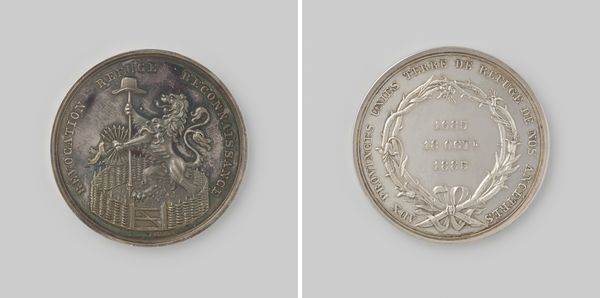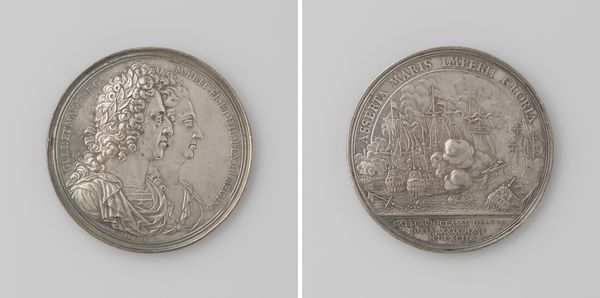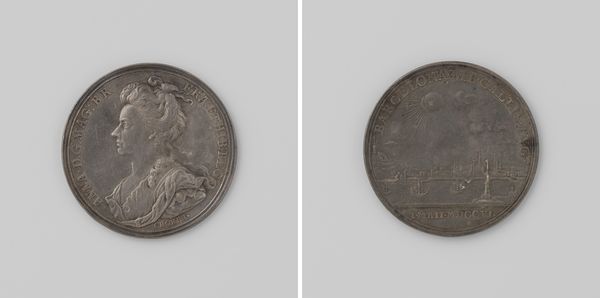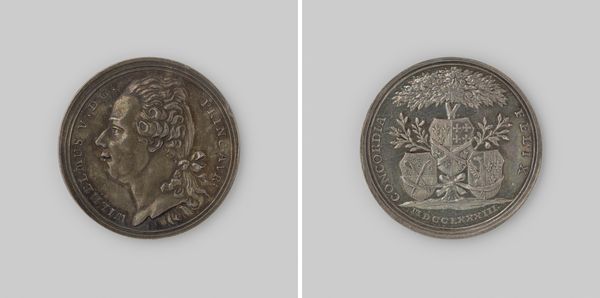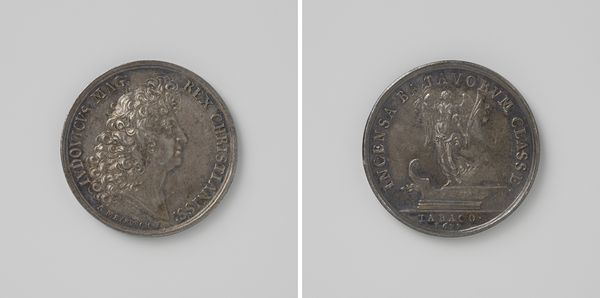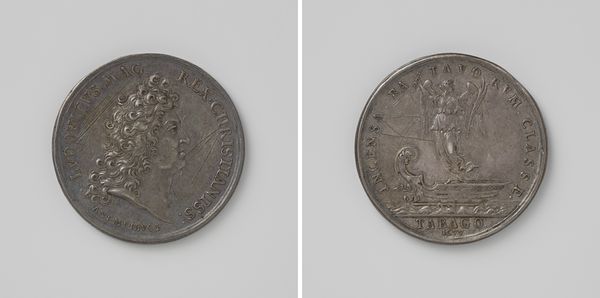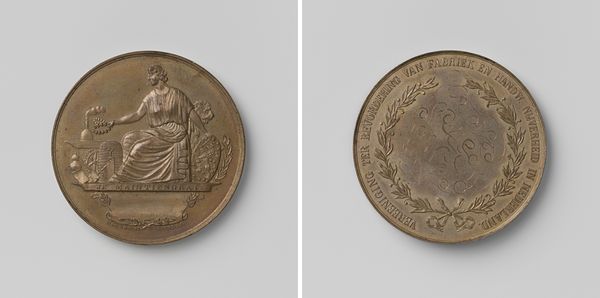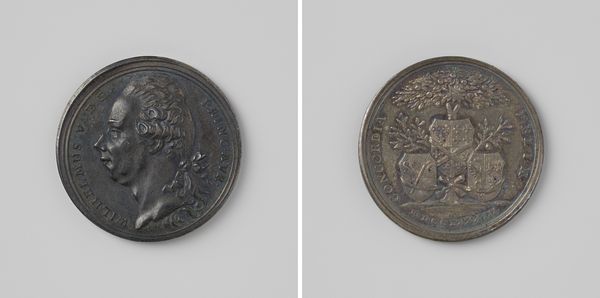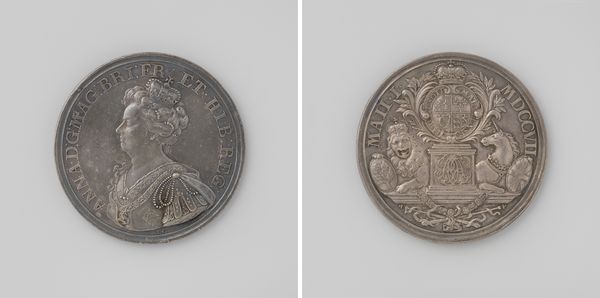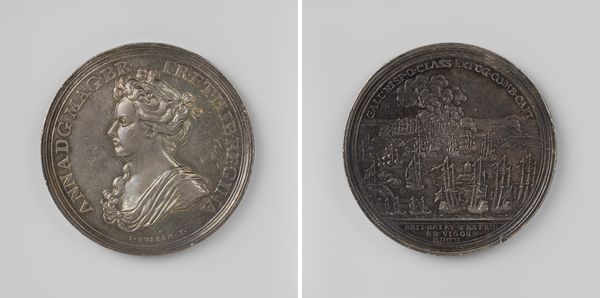
Door de gewapende patriotten van Utrecht de Staten van Holland toegedacht Possibly 1787
0:00
0:00
Dimensions: diameter 4 cm, weight 26.30 gr
Copyright: Rijks Museum: Open Domain
Curator: Here we have a fascinating, possibly 1787 print titled "Door de gewapende patriotten van Utrecht de Staten van Holland toegedacht," attributed to Theodorus Victor van Berckel. It's rendered in metal relief, and one can sense a weighty aura around it. Editor: It's strikingly austere, isn’t it? The stark silver monochrome emphasizes the profile, but there’s an imposing rigidity in its composition. Curator: Indeed. Let’s consider the materials: the printmaking and the coldness of the metal immediately root us in the historical and social conditions. Printmaking allowed for mass production, therefore promoting the ideas enmeshed in this symbolic representation across wider swathes of the populace. The relief also signifies importance and lasting value, fitting considering the object's historic subject. Editor: The portrait is rigidly classical. Note the clean lines, the serene facial expression. It's trying to present this "patriot" in the guise of an idealized ancient hero. And that Latin inscription, "OR. CIVES SERVA NOS." Clever propaganda. Curator: Precisely, that classical styling deliberately invokes the past to legitimize present actions. Let us not ignore how such relief prints were not created in a vacuum; they were made by artisans, crafted within workshops, traded, and consumed. Examining that labour speaks of how production mirrors a collective belief or desire. Editor: And the detail, or lack thereof! See how the laurel wreath, helmet, and shield are sharply rendered but somewhat stylized. There’s not as much naturalism as one might expect. Curator: True. It pulls back from representing raw individualistic humanity, choosing instead a uniform "patriot". Ultimately, an image produced to consolidate a political vision of the time, not merely record reality. Editor: Right. And that rigid classical form helps solidify the message by lending it a timeless quality. I think by isolating form and structure we can dissect the means in which symbols play their own rhetorical part here. Curator: Indeed. And by analyzing the processes, materiality, labor involved, we begin to realize that such prints encapsulate not just artistic design but active social engagement during politically turbulent times. Editor: So, in some respects, it is like studying the bone structure versus the muscle. Different viewpoints for appreciating what generates force within an organism, right?
Comments
No comments
Be the first to comment and join the conversation on the ultimate creative platform.

